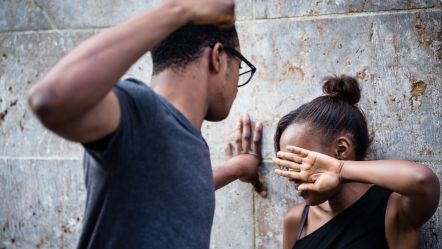Physical violence
Physical violence includes beating, burning, kicking, punching, biting, maiming or killing, or the use of objects or weapons.

Physical violence is an act attempting to cause, or resulting in, pain and/or physical injury. As with all forms of violence, the main aim of the perpetrator is not only – or may not always be – to cause physical pain, but also to limit the other’s self-determination.
Physical violence sends a clear message to the victim from the perpetrator: “I can do things to you that you do not want to happen.” Such violence demonstrates differences of social power, or may intend to promote particular demands, sometimes regularly, through coercion. Physical violence in intimate relationships, often referred to as domestic violence, continues to be a widespread phenomenon in every country.
Physical violence in the private sphere also affects young people. As mentioned above, witnessing the abuse of one parent by another leads to serious psychological harm in children. Often, children and young people who are present during an act of spousal abuse will also be injured, sometimes by accident and sometimes because they try to intervene. Young men sometimes commit criminal offences against the abusive parent (mostly fathers), in order to protect their mother and siblings, and children regularly become victims of an act of revenge by the abuser against the mother. In fact, for many mothers a prime motivation to stay in an abusive relationship is that the abuser threatens to harm or kill the children if she tries to leave.
Physical violence also appears in the intimate relationships of young people. The fact that they might not live together often adds to the difficulties in talking about it.
Gender-based violence in public is often related to assumptions and expectations concerning gender roles. Verbal abuse, name-calling, threats and attacks may take place, and it is common that LGBT+ people or those perceived to be gay, lesbian or different may become victims of public violence. Violence against LGBT+ people can be organised (groups going to well-known meeting places of gay men to beat them up) or spontaneous outbursts, for example, when a lesbian woman is attacked when she walks in the street holding hands with her partner. In this respect, public affection becomes a safety issue, and research shows that many LGBTs refrain from showing affection in public. This kind of street violence usually remains under-reported.


